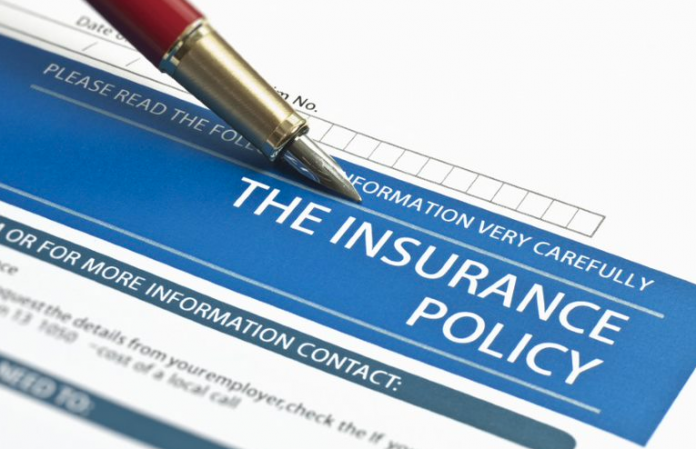This article is written by Umang Dudeja, pursuing BBA LLB from IMS Unison University, Dehradun. This article is basically upon the rise in insurance fraud and their measures and policies to control it.
Table of Contents
Insurance Fraud
Insurance fraud is an unlawful act on the part of either the insurance buyer or seller. Insurance fraud by the issuer (seller) involves selling policies from fictitious companies, failing to submit premiums, and implementing policies to create more commissions. Consumer fraud may involve false claims, falsified medical reports, post-dated policy fraud, realistic fraud, fake death or abduction and murder.
Fraud in insurance is an attempt to manipulate an insurance policy. Insurance is meant to protect against risks and not to act as a tool for enriching the insured. While policy issuer’s insurance fraud does happen, in the majority of cases it is done by the policyholder seeking to get more money by exaggerating a claim. More sensational cases are comparatively uncommon, such as faking a suicide or committing murder for insurance money.
Types of fraud in the insurance industry
The insurance industry is a conglomeration of more than 7,000 individual firms that receive more than $1 trillion premiums annually. It makes it a prime target for a wide variety of illegal activities, with a large capital flow through the industry. Yes, after banking, the insurance industry may be the second-largest victim of fraud. It is estimated that insurance fraud (not related to health insurance) costs more than $40 billion per year and is passed on to the insured in the form of higher premiums. The 5 most prevalent forms of insurance fraud are as follows:
False Claims
One of the most popular forms of insurance fraud is to claim for an accident that never occurred, or had been staged, or had never been committed. It happens in a variety of forms, often for several reasons. Slip and fall claims are perhaps the most common form of planned accident, as accidents are difficult to prove or falsify and possible payouts could be high. Policyholders are in the scam in some cases, while in some cases they are innocent victims. If an automobile owner is directly in charge of their vehicle, they often damage their vehicle and report it as an accident. Then, if they get a payout from the insurance firm, they either get the car repaired cheaply, or they simply don’t have it fixed. Homeowners may often sometimes make claims for suspected injuries or harm to property caused by themselves. The form of false allegation, such as arson, is for harm that was not an accident. In some cases, a building can be worth much less than it’s insured for. To make an insurance claim, the owner can employ someone to put fire on the building or set it on fire themselves. Homeowners who are upside down on their mortgages or company owners facing bankruptcy are other common causes of this form of fraud.
Inflated Claims
Inflated claims can happen at any time but in the aftermath of natural disasters, they appear to be the most common. The area is almost always filled with scam fraudsters and hucksters seeking to make a buck off the insurance companies if there is a natural disaster big enough to impact an entire country. In some cases, homeowners may knowingly sign inflated claims for work that has never been completed. Many forms of routine home maintenance, such as roof repairs, are also ideal for false claims. For certain cases, inflation does not come from work that has not been done, but instead the insurance provider is paid for high-quality materials that are substituted when the work is conducted.
Disaster Fraud
Chaos usually ensues in the aftermath of any natural disaster. It provides an ideal environment for a wide range of illegal activities. Owing to the high number of claims received, insurance firms simply do not have the resources at their disposal to go out and investigate every allegation. It is not common for a single home to be left completely intact right in the centre of a ring of homes which are burnt, flooded or otherwise demolished or a car or other valuables to survive in perfect condition. Insurance firms typically depend on data to assess which residential areas and which non-residential areas are eligible for coverage. When a home or other property in an area of significant harm remains intact, policyholders can make claims that are often unnoticed payable sight. For example, Hurricane Katrina caused damage of about $100 billion, and more than $34.4 billion in insurance payouts were made in addition to $80 billion in government funding. Approximately $ 6billion in government funds is estimated to simply went to insurance fraud.
Fake Death
Faking death is such a common form of deception that in a wide variety of novels, movies, and television shows, it is also a standard plot point. The idea is quite simple. A policyholder will take out on themselves a large life insurance policy, and then fake their death. If an insurance payment is earned by the beneficiary (or beneficiaries), they ride off into the sunset with their allegedly dead loved one. As in a lot of cases, they usually avoid the supposedly dead loved one and vanish into the sunset on their own-with their generous insurance payout.
Insurance Company Fraud
Not all insurance fraud is committed by policyholders or by policyholders being defrauded. Insurance brokers or companies are often committing a large amount of insurance fraud. Several of the more popular forms of fraud affecting insurance companies include premium diversion and fee churning. Premium diversion is perhaps the most common form of insurance fraud, and it occurs when insurance brokers or companies simply collect the premium of a policyholder, rather than delivering it to the underwriters. Unlicensed insurance brokers will in some cases actually sell insurance, collect the premiums and then refuse to make any claims. It is especially true with workers’ compensation insurance due to the high dollar sums associated with group insurance of that nature. Charge churning usually happens when an insurance provider constantly transfers a life insurance policy to different insurance agencies to get a profit. Insurance brokers are credited for choosing the client’s best policy, but they often switch the policy around to get a fee from various firms for themselves as brokerage. When it happens, the policyholder’s premiums also go up as life insurance is more costly when you age and their coverage often goes down in many situations.
Prevention of insurance fraud
The problem with India’s insurance firms is that they do not exchange data widely as the banks do. That’s the reason every insurance provider needs to rely on their system to find fraud. It is extremely critical that all insurance firms form a shared database and begin actively exchanging data about fraud. In 2016 a start was formed and made as a repository. Around 43 insurance companies have come together and named Experian credit rating agency to take advantage of the big data and analytics capabilities of Experian.
But for Experian’s system to operate, insurance providers have to exchange data with Experian’s systems regularly. It is impractical to many insurance providers, as it requires a lot of costs and also threatens data protection. It is however likely that data sharing will become the rule over time and deceptive policies will be discovered more easily.
Many insurers only share a derogatory list, i.e. a list of consumers, distributors and medical practitioners who have committed fraud earlier. Therefore, the system is reactive rather than predictive.
India’s insurance regulator has come down hard on insurance firms that deny claims. New laws were established in a state where an insurance provider has three years to find out if the data given at the time the policy was bought was inaccurate. For three years, the data are deemed correct and insurance firms are required to pay the claim.
The problem is that the law punishes insurance companies but does not provide them with any redress. If insurance providers believe an individual has attempted to commit fraud, they get away with very mild penalties. To stop fraud in the insurance sector, it is necessary to establish and enforce strict laws. Such laws should act as a deterrent to professional frauds who make a career out of insurance companies cheating.
Insurance firms have started aggregating data on areas where insurance fraud is rife. It could be due to the problem of law and order in the province, or it could be due to the high number of doctors willing to offer fake medical certificates in a given region. Insurance providers have started refusing insurance coverage to people in some areas. They have also begun paying a premium if they don’t reject this policy outright. This, however, is not sustainable. Across the United States, cases against this unfair practise called “redlining” have been fought. It is only a matter of time before legal action is taken across India as well.
Loss due to insurance fraud
India is a big insurance market but fraud causes the industry to have losses. Insurance fraud annually results in about Rs 40,000 crore and accounts for 8.5 per cent of the revenue generated by the industry and the enormous losses prompted the insurers to respond. Most businesses start with different departments specifically to access/identify the danger and loss associated with such frauds or scams.
“The detection of insurance fraud generally starts with identifying suspicious claims that have a higher possibility of being fraudulent,” says Anik Jain, CEO and co-founder of Symbo Insurance. “This can be done by statistical analysis, referrals from claims adjusters or insurance agents. Also, the public can provide tips to insurance companies, law enforcement and other organizations regarding suspected or admitted insurance fraud perpetrated by other individuals.” Some of the insurer’s most common methods of tackling the frauds are:
- Investigation and verification of records for identification of the fraud;
- Knowing the potential for fraud: can help reduce losses;
- Use of data analytics to identify fraud;
- Running via special review of any dubious assertion;
- Use of the statistical analyzes;
- Responsibility to private investigators;
The insured and potential clients are facing one of the greatest brunts of insurance fraud. In certain cases, fraud may also lead to delay in lawsuit settlement applications being denied.
It’s hard to specify the time frame required to investigate the fraud because it completely depends upon the type of fraud, people involved and relative potential of the fraud. “On average, it takes around 15-45 days to investigate a normal potential case. Unfortunately, there are cases which take far longer than this due to complexity of the investigation process,” said Jain.
A few years ago the Indian Insurance Regulatory and Development Authority (IRDAI) developed the Insurance Fraud Monitoring System to help curb insurance fraud. While there are still early days in the field of data sharing between insurers, this is a move that will help companies to have better plans for fraud.
Policies for insurance fraud
There are various policies and functions to control insurance fraud in the country. Some of them are provided below.
IRDA Fraud Policy
Each insurance company is needed to develop a Fraud Monitoring Framework according to the Insurance Regulatory and Development Authority (IRDA). The framework shall include provisions intended to shield, deter, identify and minimize the risk of fraud from insurance company policyholders/claimants, intermediaries and employees.
Anti- Fraud Policies
Insurers are expected to follow a comprehensive approach to accurately define, assess, track and monitor fraud risk and, ultimately, develop effective policies and procedures for risk management. As per IRDA, the board of directors of the insurance firms are required to review their respective anti-fraud policies on an annual basis, and at any other intervals as may be deemed appropriate. These policies must provide detailed guidance on fraud detection protocols, recognizing possible routes for fraud, recommendations for partnering and working with State and Local enforcement authorities to recognize the act of fraud as well as the perpetrators.
Such policies also direct the development of a mechanism that will allow them to share information with other insurance providers on the occurrence of accidents and scenarios of such fraud so that they can be red-flagged in the insurance ecosystem.
Fraud Monitoring Function
The Fraud Monitoring Function is required by each insurance provider as a separate vertical to ensure successful enforcement of the anti-fraud policies. We are responsible for developing internal reporting processes from/ and to different departments to inform staff, intermediaries and policyholders on fraud detection and prevention. Also, they will periodically inform regulatory authorities on these events as well as measures taken within a given period to avoid these scenarios. Eventually, they must send annual reports for review and correction of the courses to their respective boards.
Insurers are responsible for educating both prospective and current customers of their policies to prevent fraud. Insurers include the requisite cautions in insurance contracts and related records, properly pointing out the implications of making a false statement and/or inaccurate statement for the benefit of the policyholder, claimants and their beneficiaries.
Control using identifying triggers
One way of detecting fraud is to identify early-detection causes. To identify causes for detecting fraud, the fraud detection feature must be instrumental in recognizing vulnerable and sensitive areas within their consumer associations.
Different triggers observed for detecting fraud according to a FICCI study as:
- Assert a total amount of insured value from a scheme of only one participant.
- The proximity of allegations, multiple allegations with frequent hospitalization and numerous claims at the end of the policy era.
- Any allegations made directly following an expansion of the insured insurance number.
- Claims submitted by a consumer with a history of regular insurer shift or void in the previous insurance policy.
- Plan statements with proof of substantial premiums over/under compared with income/lifestyle of the insured.
- Claims from a non-traceable person or the documented address of the insured courier/cheque.
- In the same policy span for the primary allegation, the second claim in the same year was for an acute medical disease/surgical minor disease/orthopaedic minor illness. Young people aged 25 to 35 years of age are admitted to acute medical conditions.
- Members’ allegations that have no claim-free years, i.e. regular claim history.
This is the need of the hour to provide legislation that will provide rapid redress against such fraud. Strict laws and strict penalties are needed in today’s scenario for those guilty of committing such frauds which will also serve as a deterrent to those trying to abuse this industry.
Conclusion
Even though there are various policies and bodies to cope with insurance frauds in India, still we see many frauds and losses to the companies and firms. As we see, our country is having a large number of insurance fraud by which companies have to face losses which annually results about Rs 40,000 crore i.e. 8.5 per cent of the revenue generated by the industry. Nowadays, there is the requirement to make new and strict laws and effective implementation for the fraudsters, who want to have a handsome amount by doing frauds to the insurance companies. People and insurance firms must also take more precautions regarding fake insurance claims, as they have to make sure that the claim for which insurance companies are paying are real or not.
References
- https://www.researchgate.net/publication/278021753_Vulnerability_of_Indian_Health_Insurance_Industry_to_Frauds
- https://economictimes.indiatimes.com/topic/insurance-fraud
- https://www.indialawoffices.com/knowledge-centre/insurance-frauds-and-remedies-in-india
- https://www.managementstudyguide.com/abcs-of-insurance-fraud-in-india.htm
- https://www.financialexpress.com/industry/indias-insurance-industry-hit-by-frauds-insurers-pay-higher-premium-to-compensate/1926553/
- https://www.iovation.com/topics/5-most-common-types-of-insurance-fraud
- https://www.outlookindia.com/outlookmoney/insurance/frauds-in-insurance-sector-3706
- https://www.fbi.gov/stats-services/publications/insurance-fraud
- http://www.ficci.in/ficci-in-news-page.asp?nid=21359
- https://financialservices.gov.in/insurance-divisions/Insurance-Regulatory-&-Development-Authority
- https://www.irdai.gov.in/ADMINCMS/cms/Uploadedfiles/Reports/Report%20on%20Fraud%20Control.pdf
LawSikho has created a telegram group for exchanging legal knowledge, referrals and various opportunities. You can click on this link and join:
 Serato DJ Crack 2025Serato DJ PRO Crack
Serato DJ Crack 2025Serato DJ PRO Crack











 Allow notifications
Allow notifications



